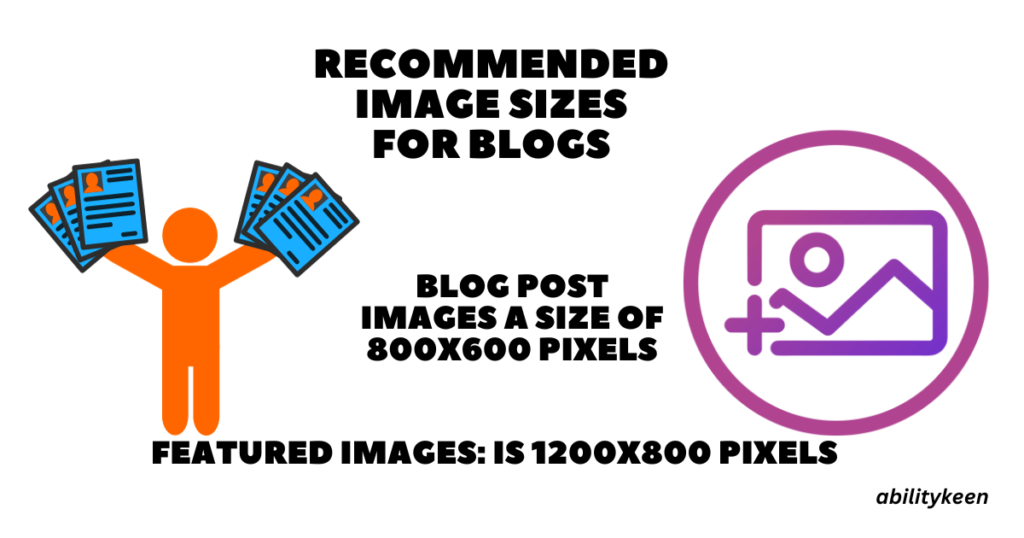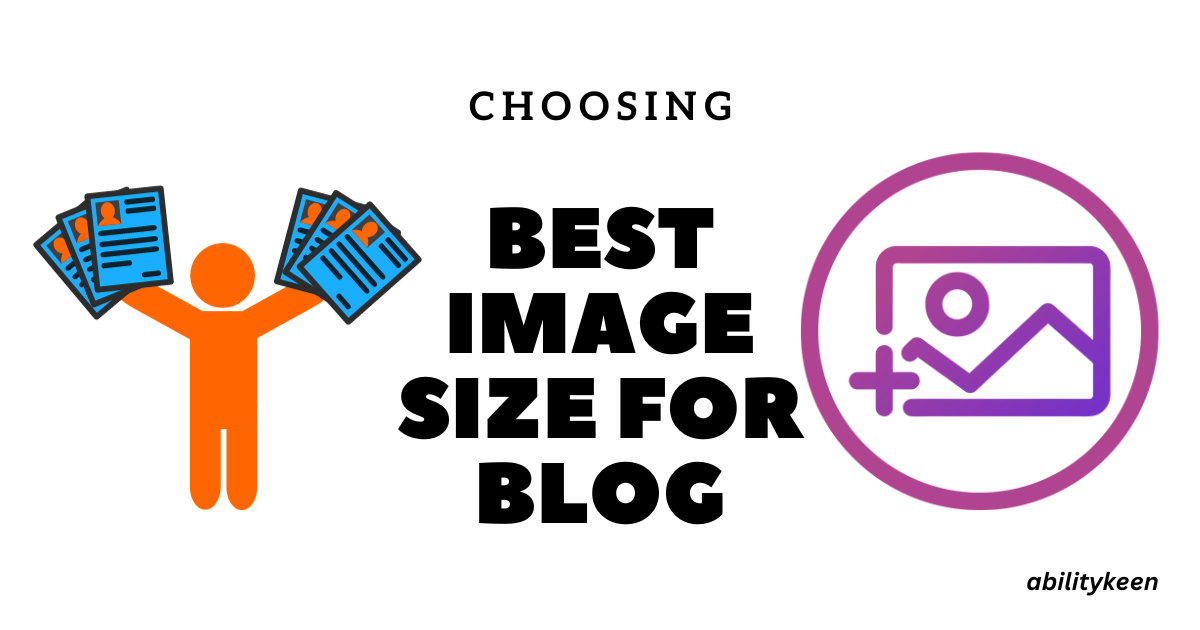When it comes to creating a successful blog, there’s more to it than just writing great content. Images and Images size play a crucial role in enhancing your blog’s visual appeal and engaging your readers. However, selecting the right image size can be a bit tricky. In this article, we’ll explore the importance of image size for your blog and guide you on choosing the best size to make your blog shine.
Table of Contents
Why Does Image Size Matter?
1. Faster Loading Times
One of the main reasons to consider image size is page loading speed. If your blog takes too long to load, visitors may get frustrated and leave. Larger images can slow down your website, while smaller ones load faster. Finding the right balance ensures a better user experience.
2. Mobile Friendliness
With the rise of mobile devices, it’s essential to have images that look great on both desktop and mobile screens. Images that are too large can disrupt the layout on smaller screens, leading to a poor user experience. Properly-sized images are key to making your blog mobile-friendly.
3. Aesthetics and Readability
Images should complement your blog’s content, not overwhelm it. Oversized images can make text hard to read and disrupt the flow of your blog. The best image size ensures a harmonious balance between text and visuals, making your content more appealing.
Choosing the Best Image Size
1. Assess Your Blog’s Layout
Before selecting an image size, examine your blog’s layout. Consider the width of your content area and sidebar, if you have one. The images you choose should fit comfortably within these constraints without distorting or overlapping your content.
2. Keep Aspect Ratios in Mind
Maintaining the aspect ratio of your images is crucial to avoid distortion.The aspect ratio refers to the proportion between the width and height of an image. Common aspect ratios include 4:3 and 16:9. Stick to the original aspect ratio of your image or choose one that suits your blog’s design.
3. Compression and Optimization
To maintain a fast-loading website, use image compression and optimization tools. These tools reduce the file size of your images without compromising quality. Plugins and online services are available to make this process easier.
4. Use Responsive Images
Consider using responsive images that adapt to the screen size of the viewer. HTML attributes like “srcset” and “sizes” allow you to specify different image sizes for different devices. This way, your images will look great on various screens.
5. Test and Preview
Before publishing your blog post, preview it on different devices and browsers. Check how your images appear and make any necessary adjustments. This step ensures that your blog looks good to all your readers.
Choosing the Best Image Size for Your Blog: Recommendations and Tips
When it comes to creating a visually appealing blog, one of the key factors to consider is the image size. The right image size not only enhances the overall look of your blog but also ensures that your website loads quickly and efficiently. In this article, we will discuss the best image sizes for blogs and provide recommendations to help you make the most of your visual content.
Before we dive into specific recommendations, let’s understand why image size is so important for your blog.
1. Page Loading Speed: Large images can slow down your website’s loading time, frustrating your visitors and negatively impacting your search engine ranking. Optimizing image sizes helps maintain a fast and responsive website.
2. User Experience: Images play a vital role in engaging your readers and making your content more enjoyable to consume. The right image size ensures that your pictures display correctly and look great on all devices.
3. Mobile Responsiveness: With the increasing use of mobile devices, it’s essential to use image sizes that adapt to different screen sizes without loss of quality.
Recommended Image Sizes for Blogs

Here are some standard image sizes and recommendations to consider for your blog:
1. Featured Images: These are the main images associated with your blog posts. A common size for featured images is 1200×800 pixels. This size is large enough to display well on various devices and provides a professional appearance.
2. Blog Post Images: Images within the content of your blog should be smaller to avoid slowing down the page. A size of 800×600 pixels is generally suitable for these images.
3. Thumbnails: Thumbnails are smaller versions of images that can be used for previews and galleries. A size of 200×200 pixels works well for most thumbnail images.
4. Headers and Banners: If you want to include header images or banners on your blog, a size of 1920×500 pixels is often recommended. This size ensures that your header looks great on both desktop and mobile screens.
5. Social Media Sharing Images: For images shared on social media, consider using 1200×630 pixels. This size is optimized for various social media platforms and ensures your posts look great when shared.
Also Read How to Screen Record on iPhone: Step-by-Step Guide
Tips for Optimizing Images
Apart from choosing the right image size, consider these tips to further optimize your images for your blog:
1. Compression: Compress your images to reduce file size without compromising quality. There are many online tools and plugins available to help with this.
2. Image Formats: Use the right image format. JPEG is excellent for photographs, while PNG is better for images with transparency, like logos.
3. Alt Text: Always include descriptive alt text for your images. This not only makes it easier for people to use but also improves how search engines find it.
4. Mobile Optimization: Test your blog’s appearance on mobile devices to ensure images resize and display correctly.
5. Use a Content Delivery Network (CDN): A CDN can help load your images faster by distributing them across various servers globally.
Selecting the best image size for your blog is crucial for maintaining a fast-loading website and creating a great user experience. Remember that the specific size may vary depending on your blog’s design and layout, so it’s a good idea to test different sizes and monitor your website’s performance.
By following the recommendations and tips mentioned in this article, you can make sure your blog looks stunning, loads quickly, and engages your readers effectively.


Explore the ranked best online casinos of 2025. Compare bonuses, game selections, and trustworthiness of top platforms for secure and rewarding gameplaycasino activities.
Explore the ranked best online casinos of 2025. Compare bonuses, game selections, and trustworthiness of top platforms for secure and rewarding gameplaycasino.